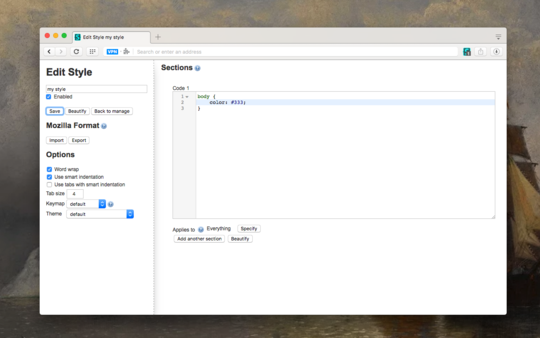Transform your customer portal into a true personalization platform

Key Takeaways:
- Customers expect personalized digital experiences, not just websites.
- Customer portals enable advanced personalization, user autonomy, and a seamless multi-device experience.
- Jahia offers a powerful platform for building scalable, integrated (CRM, DAM, PIM), and user experience-centric portals.
- Content personalization significantly improves engagement and loyalty.
- An optimized experience requires performance, effective search, accessibility, and continuous ROI measurement.
Customers want more than basic websites, they expect experiences that feel made just for them. Customer portals have grown from simple login pages into helpful hubs where users can find content tailored to their needs, adjust their settings, and connect with your brand in meaningful ways.
A personalized digital experience isn't just optional anymore; it's essential to stay competitive. Research shows that 69% of customers like personalisation when it's based on information they've chosen to share, and 66% expect companies to understand what they need. With Jahia's platform, businesses can turn their customer portals into engaging digital spaces that make customers happier, more loyal, and deliver real business results.
Why customer portals are a key part of your digital experience strategy
Customer portals work as a central meeting place where your audience connects with your brand in a secure, personalized way. Unlike regular websites that anyone can visit, portals provide protected spaces where customers can see their account details, content made just for them, and tools to help themselves. This helps build stronger relationships with your customers.
Customer portals have become more important as businesses see how valuable personalized experiences can be. A good portal can:
- Reduce operational costs by enabling user autonomy and minimizing support interventions
- Increase user satisfaction through relevant, personalized digital touchpoints
- Collect useful information to improve future experiences
- Help sell additional products through targeted recommendations
- Build stronger customer loyalty through consistent, valuable interactions
When built with a powerful platform like Jahia, customer portals do more than just work well, they become valuable business tools that help your company grow. By creating a secure web portal solution that grows with your customers' needs, companies can build lasting digital relationships that go beyond single purchases.
What users expect from a portal today
Today's portal users have high expectations based on their experiences with the popular SAAS solutions. They want easy-to-use interfaces, personalized content, and smooth interactions across all devices. Modern portal users expect:
- Content that feels relevant: Information and features that match their specific needs and history with your brand
- Easy login: Simple sign-in processes with options like single sign-on (using one account for multiple services)
- Self-help options: Ways to find information and complete tasks without contacting support
- Works on all devices: Full functionality on phones, tablets, and computers
- Up-to-date information: Immediate access to the latest updates and alerts
- Works with their current tools: Connections to other digital platforms they already use
- Safety and privacy: Trust that their data is protected while still allowing personalization
To meet these expectations, you need a thoughtful approach to creating digital experiences that balance functionality, security, and personalization. Jahia's platform gives you the tools to meet and exceed these user expectations through powerful content management and delivery capabilities.
Usability, autonomy and continuity across channels
Good user experience goes beyond attractive design to include three key elements:
- Usability means customers can find their way around easily, locate information quickly, and complete tasks without confusion.
- Autonomy gives customers the power to help themselves whenever possible. By providing self-service tools, searchable knowledge bases, and interactive features, portals reduce the need for customer service calls while making customers happier.
- Continuity across channels ensures that customers have a consistent experience whether they're using a computer, mobile phone, or switching between digital and physical interactions.
These elements work together to create portals that feel less like corporate tools and more like valuable resources that customers actively want to use.
The power of personalization to drive engagement and retention
Personalization is essential for exceptional portal experiences. By tailoring content, interfaces, and interactions to individual preferences and behaviors, businesses can dramatically increase engagement and keep customers coming back. The impact of personalized digital experiences is clear:
- Personalized experiences can deliver 5-8 times the return on marketing spending
- 80% of consumers are more likely to buy when brands offer personalized experiences
- Companies using advanced personalization report revenue increases of 10% or more
With Jahia's CMS personalization capabilities, businesses can implement these strategies at scale while maintaining control. The platform's personalization engine allows for rule-based content delivery that can be adjusted to meet specific business goals and customer needs.
How to build a portal that grows with your business
Building a portal isn't a one-time project but an ongoing process that should evolve with your business. To ensure long-term success, portals must be built on flexible foundations that can adapt to changing requirements, grow with user numbers, and incorporate new technologies as they emerge.
Jahia provides a future-proof foundation for portal development through its React component-based architecture, API-first approach, and extensive integration capabilities. This flexibility lets businesses start with core functionality and expand over time without major rebuilds.
Key considerations for building scalable portals include:
- Modular design that allows features to be added or changed independently
- Flexible content models that can evolve as business needs change
- Robust user management capabilities that support complex permissions
- Performance optimization to maintain speed as usage increases
- Analytics integration to monitor usage and guide improvements
Integration with CRM, DAM and PIM
The true power of a customer portal emerges when it connects to your core business systems. Integration with Customer Relationship Management (CRM), Digital Asset Management (DAM), or Product Information Management (PIM) systems creates a unified ecosystem that enriches the portal experience while streamlining operations.
Jahia's open architecture and robust API capabilities make these integrations seamless:
- CRM integration allows portals to use customer data for better personalization while also capturing portal interactions to enrich customer profiles. This two-way flow of information ensures that sales and support teams can see activities from customers or partners, while customers benefit from experiences informed by their full relationship with your company.
- DAM integration enables efficient management and delivery of media assets within the portal. This ensures that images, videos, and documents are consistently presented, properly licensed, and optimized for performance. With DAM integration, marketing teams can update assets in one place and see those changes throughout the portal.
Optimizing the user experience: search, performance and accessibility
A portal's value depends on how effectively users can find information, complete tasks, and interact with content. Optimizing these fundamental aspects of the user experience is essential for portal success:
- Search functionality is often the main way portal users navigate, particularly when looking for specific information. Jahia's advanced search capabilities, including filtered search, auto-suggestions, and personalized results, help users quickly find exactly what they need.
- Performance optimization ensures that the portal responds quickly regardless of user load or complexity of operations. Jahia's platform includes built-in caching, content delivery networks (CDN) integration, and efficient rendering to maintain fast response times even during peak usage. This performance focus is especially important for mobile users who may have variable connection speeds.
- Accessibility compliance makes portal resources available to all users, including those with disabilities. Jahia supports the development of accessible experiences that conform to WCAG guidelines through built-in validation tools, semantic markup, and accessible component libraries. This commitment to accessibility not only ensures compliance with regulations but also improves usability for all users.
How to measure success and ensure long-term ROI
Implementing a customer portal is a significant investment, making measurement and optimization essential for demonstrating value and guiding future improvements. Effective measurement strategies combine numbers-based metrics with qualitative insights to create a comprehensive view of portal performance:
Key performance indicators should align with specific business objectives for the portal. Common metrics include:
- Adoption and usage rates (active users, session frequency, duration)
- Self-service completion rates (tasks completed without assistance)
- Conversion metrics (downloads, form submissions, purchases)
- Satisfaction scores (NPS, CSAT, user ratings)
- Support deflection (reduction in support tickets or calls)
- Revenue impact (cross-selling, upselling, retention)
Analytics implementation should go beyond basic traffic measures to capture meaningful interactions and journeys. Jahia's analytics capabilities can be extended through integration with tools like Google Analytics, Adobe Analytics, or specialized portal analytics solutions. These tools help identif1y patterns in user behavior that can inform optimization efforts.
Continuous improvement processes ensure that insights from analytics and user feedback translate into actual enhancements. Regular review cycles, A/B testing of new features, and structured user research all contribute to a portal that evolves to meet changing user needs and business objectives.
ROI calculation should consider both direct financial impacts (cost savings, revenue generation) and indirect benefits (improved satisfaction, increased loyalty, enhanced brand perception).
Customer portals designed to boost performance
Customer portals have evolved from simple login interfaces to sophisticated engagement platforms that are at the heart of digital customer relationships. When designed with personalization, integration, and user experience in mind, portals become powerful tools for driving satisfaction, efficiency, and growth. The personalized digital experiences enabled by platforms like Jahia deliver measurable business impact while meeting the high expectations of today's digital customers.
FAQ :
1. What is a personalized digital experience?
It's online interaction tailored to each user. It's based on the user's data, preferences and behaviors, and offers content, tools and services that correspond to the user's profile, as in a customer portal where the experience evolves according to the profile.
2. What does "personalized experience" mean?
It's an experience tailored to the specific needs of a user. It draws on the user's history, choices and interests to offer a more relevant, engaging and efficient browsing experience.
3. What is a concrete example of personalized customer experience?
It's the automatic display of content tailored to the user. For example, in a Jahia customer portal, a logged-in user can see documents, recommendations or alerts directly related to his or her activities or CRM data.

